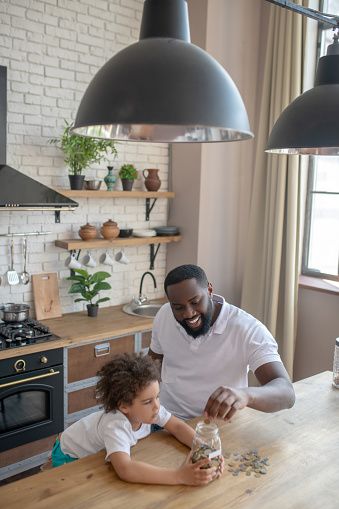5 ways to battle the rising costs of education in SA
As South Africans enter the second quarter of the 2023 academic year, here’s why now is the time to start saving for your child’s future – and how to do it.

As South Africans gear up every year for the academic year, parents must face the rising cost of education amid a deepening cost-of-living crisis and several years of recession and pandemic-related upheaval.
In the struggle to afford daily essentials, many are considering alternatives to traditional schooling, including the fast-growing options of online and homeschooling.
“What parents need to understand is that education will get more and more expensive over time, outstripping salary inflation,” explains Marius Pretorius, Head of Marketing Retail Savings and Income at Old Mutual.
“In real terms, education inflation outpaces the Consumer Price Index [CPIX] by between 2.5 and 3 percent, making it unlikely that you'll be able to save the full cost of your child’s university fees.”
But, says Pretorius, that’s not necessarily the goal of a workable educational savings plan.
“Rather than getting discouraged by an impossible figure, it’s important to understand the principles of an attainable savings plan and to focus squarely on the underlying aim – that is, to support your child to become a balanced, functional, and independent member of society in whichever ways best suit their unique passions and abilities.”
“This may or may not include a university degree. Your child may require financial support to learn an in-demand trade such as plumbing or to start their own business. Stay open to a wide range of options and remember that by the time your child finishes school, there will be jobs that don’t currently exist,” advises Pretorius.
“This will help you to navigate the decades-long journey of educating a child.”
Pretorius offers the following five tips for embarking on an educational savings plan:
1. Consider the options
According to research from the Old Mutual Group, putting a child through the public primary and high school system will cost on average R651 313. To put a child through private schooling would cost parents R1 901 549 on average.
Public primary school fees are currently about R24 408 a year, while private primary schools cost about R71 496 on average per year. Sending your child to a government high school will cost around R36 072 per year, while a private high school is likely to cost you between R105 084 per year.
“The definition of a quality education is a very personal one that’s relative to your values, your lifestyle, and where you live,” says Pretorius.
“It’s about more than a school’s pass rate and, at the same time, fancy facilities like indoor swimming pools are not necessarily accurate indicators of value, either. Learn as much as you can about the schools in your area so you can make an informed choice about what’s best for your family.”
2. Factor in the hidden costs
Fees aren't the only cost of education, warns Pretorius. Parents must also make provisions for:
* transport,
* aftercare,
* uniforms,
* sports equipment,
* food, and,
* other expenses.
All subject to inflation in their own right. For those following alternative routes, there is the cost of a device with the right specifications to enable online learning, fast and reliable wi-fi, and in-person tutoring.
3. Start early and stay the course
“The earlier you start saving for your child’s education, the better,” says Pretorius.
“But since you probably won’t save up the full cost, the idea is to contribute consistently, invest strategically to outpace inflation, and increase your contributions over time. This will give you a crucial buffer to help you cope with the rising cost of education. You may have to dip into your funds to pay fees, but the important thing is to make a habit of saving and keep contributing no matter what.”
4. Examine your money habits
“Most South Africans will only ever draw up a budget when completing a credit or loan application – and even then the exercise is typically not very accurate,” says Pretorius.
“But the truth is that you simply cannot save for your child’s education unless you take a long hard look at your spending and put in the work to improve your money habits.”
“It’s an admittedly difficult path, but it’s also closely related to the core aim of raising a balanced and functional child because you are acquiring and modelling the financial literacy skills they will draw on as adults.”
5. Speak to a financial planner
“If you were sick, you would visit a doctor and follow their advice to resolve your symptoms. Likewise, when you’re facing the financial challenge of saving for your child’s education, the single most effective step is to consult a professional financial advisor and take their lead,” advises Pretorius.
“A qualified financial advisor will be able to set out the most comprehensive, tax-efficient savings options – not all of which require contractual monthly contributions. They’ll also help you with estate planning and disability cover to safeguard your child’s education should something happen to you.”




Pretorius concludes that, “saving for your child’s education and sticking to your financial plan is important for raising happy and independent adults”.
|
Expected cost of one year of education |
2023 |
2030 |
2035 |
2038 |
|---|---|---|---|---|
|
Public Primary School |
R24 500 |
R41 900 |
R61 500 |
R77 500 |
|
Public High School |
R36 100 |
R61 900 |
R90 900 |
R114 500 |
|
Private Primary School |
R71 500 |
R122 600 |
R180 100 |
R226 800 |
|
Private High School |
R105 100 |
R180 100 |
R264 700 |
R333 400 |
|
University |
R55 900 |
R95 700 |
R140 700 |
R177 120 |
*Costs are in Rands and based on education inflation of 8% per year. The amounts are rounded to the nearest hundred. The primary school costs are for Grade 1 to 7 and exclude pre-primary. University costs are for one year of an undergraduate degree.* Source: Old Mutual Research
For more information visit Old Mutual Education Plans Solutions.
Use Old Mutual's free online education calculator to get an estimate of the future cost of tertiary education.


